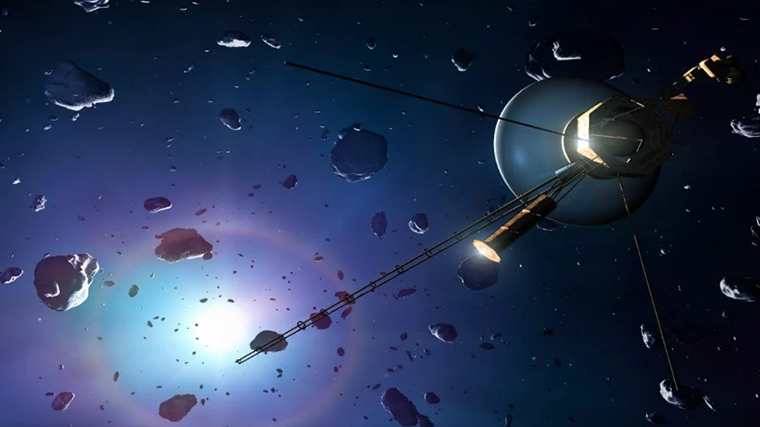Halley’s Comet is a periodic comet seen from Earth every 75-79 years. It was named after the English astronomer Edmond Halley. The comet’s nucleus consists of dust, ice, and frozen gases. The comet was last seen in 1986 and will next appear in mid-2061. The first appearance of Halley’s Comet in the historical record dates back to 240 BC. The comet has a well-developed ion tail that exhibits the characteristics of tail rays, condensations, kinks, and an overall helical structure and may even experience a breakup event where part of the ion tail detaches.
What is the orbit of Halley’s comet?
The path of Halley’s Comet intersects the Earth’s orbit twice yearly. Credit: EarthSky
Halley’s comet has an elliptical orbit around the Sun, which takes it well beyond the orbit of Neptune and inside the orbits of Earth and Venus. Halley’s comet is believed to have originated in the Oort cloud, which is 20,000 to 50,000 AU away. From the sun This is because the orbits of Halley-type comets have been perturbed by the gravity of the gas giants and directed into the inner part of the solar system. Halley’s Comet rotates in the opposite direction to the rotation of the planets and is designated as 1P.
What are some interesting facts about Halley’s Comet?
The Halley Multicolor Camera on ESA’s Giotto spacecraft captured this image of the nucleus of Comet Halley. This image was the Astronomy Picture of the Day for January 4, 2010. Credit: ESO
The comet made its closest approach to Earth on April 10, 837, at a distance of 0.04 AU (6 million km, 3.7 million miles). The gravitational influence of the planets caused the orbital period of Halley’s Comet to change from 74.5 to nearly 79 years, while Earth passed through Halley’s dust tail during the comet’s return in 1910 with no apparent effect. The mass of the comet nucleus has decreased by 80-90% over the last 2000-3000 revolutions. Halley’s comet dust particles are a mixture of CHON compounds and silicates. At the same time, the gases ejected from the core are mostly water vapor, carbon monoxide, and traces of methane and ammonia. The nucleus of Halley’s comet is relatively small and has an irregular potato shape with dimensions of 15×8×8 km. Its mass is also relatively small, about 2.2× 1014 kg, with an average density of about 600 kg/m³ (for comparison, the thickness of water is 1000 kg/m³), which probably means that the core consists of a large number of weakly connected fragments forming a pile of fragments.
Banner image: Objectif telescope at La Silla in 1986. Credit: ESO
Image credit:
https://www.eso.org
https://earthsky.org
https://earthsky.org






